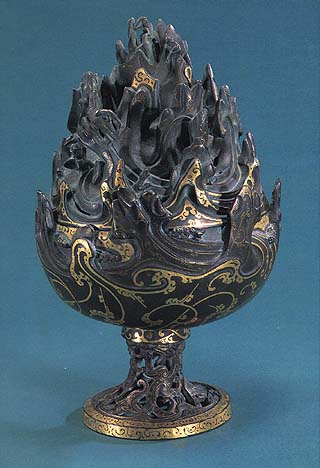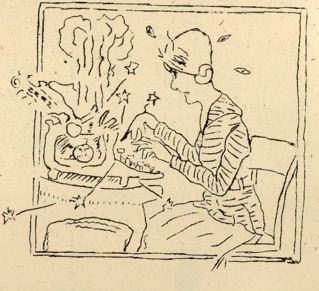Meditations of Violence
/ Yes, dear reader, it seems I am the last kid (blogger) on the block to read Meditations on Violence, A Comparison of Martial Arts Training & Real World Violence, by Sgt. Rory Miller. Many of my fellow bloggers have recommended it but it wasn't until I got hold of it myself that I understood why.
Yes, dear reader, it seems I am the last kid (blogger) on the block to read Meditations on Violence, A Comparison of Martial Arts Training & Real World Violence, by Sgt. Rory Miller. Many of my fellow bloggers have recommended it but it wasn't until I got hold of it myself that I understood why.Sgt. Rory is a good writer. He understand his audience really well. His audience is made up mostly of tough-guy martial artists who train a lot, and not so tough-guy martial artists who also train a lot. He talks to us as if we were a bunch of girls sitting around in our nighties at a pajama party. In walks Sgt. Rory with his big boots, body armor, sim-guns, SWAT team-prison guard experience, with talk of predators and the monkey dance. With bravado and humor, he kindly offers to set us straight.
This book makes you meditate on violence. I particularly like his discussion of what happens to your body when you are attacked--What he calls the hormone cocktail. He says we lose dexterity and coordination and not just the ability the think or plan but the ability to see, hear and feel. Our sense of time becomes distorted and we can even freeze up.
Reading this book makes us think hard on the value of our martial arts training. Different types of training serve wildly different purposes. Of course this is obvious, we don't do muscle building to get good at push-hands, we don't cultivate weakness to win wrestling competitions, and we don't practice butterfly kicks unless we have an appetite for showing off. But no doubt, readers will find justifications for doing the practices
 they already enjoy--Even though he blind sides you with smart quips like this one:
they already enjoy--Even though he blind sides you with smart quips like this one:Experience, in my opinion, could not give rise to a new martial art. Given the idiosyncratic nature and the improbability of surviving enough high-end encounters, it would be hard to come up with guiding principles or even a core of reliable techniques. I am painfully aware that things that worked in one instant have failed utterly in others.
There we have it, from the tough guy of all tough guys, the professionals' professional, the marital arts trainers' trainer! Martial arts can not have been created by people with real life fighting experience. Go ahead, bite down on this bullet, I know it hurts.
Still he unwittingly makes a great case for Chinese internal martial arts training. For the sake of argument, let's pretend that the main reason internal martial arts were created was for fighting (an idea my regular readers know I find ridiculous).
In a fight for our lives we fall under the influence of adrenaline and we become very strong. Mark one down for cultivating weakness! Don't waste your time cultivating strength, in a real fight you'll be really, really strong-- automatically...autonomicly.
You will also lose your sensitivity to pain, so external conditioning, training to take blows, is also a waste of time. Sgt. Rory doesn't totally reject conditioning. He says that training surprise impacts, on your face
 particularly, can help to keep you from going into shock in a situation where you are completely surprised. Familiarity with the feeling of being hit will make it easier to see through the hormonal fog.
particularly, can help to keep you from going into shock in a situation where you are completely surprised. Familiarity with the feeling of being hit will make it easier to see through the hormonal fog.Speaking of fog, he gives some statistics on police firing their pistols while they are under attack. Basically, they miss most of time at very close range because they are shaking and they can't see:
...Under the stress hormones, peripheral vision is lost and there is physical "tunnel vision." Depth perception is lost or altered, resulting in officers remembering a threat five feet away as down a forty-foot corridor. Auditory exclusion occurs--you may not hear gunfire, or people shouting your name or sirens.
Blood is pooled in the internal organs, drawn away from the limbs. Your legs and arms may feel weak and cold and clumsy. You may not be able to feel your fingers and you will not be able to use "fine motor skills," the precision grips and strikes necessary for some styles such as Aikido.
The "dis" of Aikido here is totally unnecessary since all styles have these kind of techniques, probably invented for dealing with drunks. But what a great case he makes for internal styles like Baguazhang and Taijiquan!
Internal arts don't rely on focused use of the eyes, in fact my bagua training is full of exercises designed to get you to use your eyes in unusual ways. I would even argue that the different bagua Palm Changes can invoke different experiences of time, distortions if you will. If you are constantly spinning around or turning your head, you can get by without your peripheral vision.
Internal arts are based on the principle that coordination will be impossible in a real fight. That's why we only move from the dantian! (As I noted above, I don't believe fighting is the only reason we move the way we do, or even the primary reason...but it makes a great argument doesn't it?) In bagua and taiji we don't tense up our muscles, all movement is centralized in a single impulse. We use one unbroken spiral as our only technique.
Jumping rope? Waste of time too. It's fun training for sparing games, but in a real surprise attack two things are likely. One, you freeze and stop breathing like you are a frightened animal "playing dead." And two, the hormone cocktail will give incredible speed and stamina--don't bother training those either!
Lest I leave you thinking everything he says is pro-internal arts, I should point out the obvious. Any technique requiring sensitivity will likely be useless in a fight to the death. So is push-hands, which is all about sensitivity, really useless? Maybe it is. But he also makes the case that training to attack from a place of total stillness is great practice for teaching yourself how to get "un-frozen" when you are utterly petrified. Good Stuff!!!
note: I just I just Googled "Meditation on Violence" and I got Maya Deren's 1948 12 minute film by the same title, a classic if you haven't seen it yet.

 I took a short workshop on working with Special Education students last week. It got me thinking about how common low-grade Sensory Integration Disorders are. A Sensory Integration Disorder is a developmental problem, meaning it appears as a child ages.
I took a short workshop on working with Special Education students last week. It got me thinking about how common low-grade Sensory Integration Disorders are. A Sensory Integration Disorder is a developmental problem, meaning it appears as a child ages. Part of what characterizes a Sensory Integration Problem is not being sure where your body is, or what your body is doing. So conditioning exercises which put pressure or impact on the skin and bones actually feel good, they help a person with this problem integrate. Building up muscles may also feel good. As does wrestling, or even getting caught in a football style pileup!
Part of what characterizes a Sensory Integration Problem is not being sure where your body is, or what your body is doing. So conditioning exercises which put pressure or impact on the skin and bones actually feel good, they help a person with this problem integrate. Building up muscles may also feel good. As does wrestling, or even getting caught in a football style pileup! I went over to Master George Xu's house yesterday to work on a writing project.
I went over to Master George Xu's house yesterday to work on a writing project. No, the Internal Martial Arts were developed by people who had already cultivated a subtle body; a weak, sensitive, feminine (yes I said that), humble, yielding, and desireless physicality. A body cultivated with the idea that lack of pretense is not only a moral way of being; but a moral way of moving.
No, the Internal Martial Arts were developed by people who had already cultivated a subtle body; a weak, sensitive, feminine (yes I said that), humble, yielding, and desireless physicality. A body cultivated with the idea that lack of pretense is not only a moral way of being; but a moral way of moving. Most people don't have a very clear sense of their spine. There are hundreds of different martial arts and qigong exercises which bring sensitivity, awareness and mobility to the spine. This material is very rich.
Most people don't have a very clear sense of their spine. There are hundreds of different martial arts and qigong exercises which bring sensitivity, awareness and mobility to the spine. This material is very rich. The vast majority of this material must be taught in a small class because each person needs a fair amount of feedback and interaction with the teacher. That's why it's not very well known or understood. It's this lack of personal attention which leads people to keep doing brutish things like sit-ups.
The vast majority of this material must be taught in a small class because each person needs a fair amount of feedback and interaction with the teacher. That's why it's not very well known or understood. It's this lack of personal attention which leads people to keep doing brutish things like sit-ups. Many people have pointed out that Taijiquan may be an art designed to keep the dynamic quality of our sea legs, while on land. It is at least designed to get us to give up the predictability of our land legs. The image often repeated in both martial arts and Chinese medicine of the dantian being an ocean would somewhat support this thesis to. Shirley seamen realized that the gentle pitching and rolling of the ocean was good for the internal organs. Perhaps they wanted to keep that quality of health once they gave up the sea life.
Many people have pointed out that Taijiquan may be an art designed to keep the dynamic quality of our sea legs, while on land. It is at least designed to get us to give up the predictability of our land legs. The image often repeated in both martial arts and Chinese medicine of the dantian being an ocean would somewhat support this thesis to. Shirley seamen realized that the gentle pitching and rolling of the ocean was good for the internal organs. Perhaps they wanted to keep that quality of health once they gave up the sea life. So naturally I recommend people try doing their taijiquan on a boat sometime. I would recommend you try it on an airplane too, but now-a-days that will likely get an over reaction from your fellow air travellers.
So naturally I recommend people try doing their taijiquan on a boat sometime. I would recommend you try it on an airplane too, but now-a-days that will likely get an over reaction from your fellow air travellers. A female friend of mine was recently attacked by a crazed crackhead half block from her house. He was big and he kicked her in the ribs.
A female friend of mine was recently attacked by a crazed crackhead half block from her house. He was big and he kicked her in the ribs. Hexagram 10 of the
Hexagram 10 of the  Chinese Internal Martial Arts cultivated with a Daoist perspective achieve quite the opposite results of what most people think. These arts are not about gaining control. They are not about preparing for some monstrous future attack. They are not about trying to control or predict the future.
Chinese Internal Martial Arts cultivated with a Daoist perspective achieve quite the opposite results of what most people think. These arts are not about gaining control. They are not about preparing for some monstrous future attack. They are not about trying to control or predict the future. In Buddhism they have the expression, "Skillful Means," to describe brilliant techniques on the road to enlightenment. But it's also kind of a Buddhist joke because the end result requires no skill at all.
In Buddhism they have the expression, "Skillful Means," to describe brilliant techniques on the road to enlightenment. But it's also kind of a Buddhist joke because the end result requires no skill at all. Her innocent response was good enough.
Her innocent response was good enough. Check out a great post from
Check out a great post from  Musicians must learn to distinguish between jing and qi.
Musicians must learn to distinguish between jing and qi. When I'm typing, I'm not thinking about the keys I'm hitting, and I'm not thinking about the words I'm spelling, I am thinking about what I want to say. I am thinking about the sentiment I want to convey, the style, the flavor, and the rhythm.
When I'm typing, I'm not thinking about the keys I'm hitting, and I'm not thinking about the words I'm spelling, I am thinking about what I want to say. I am thinking about the sentiment I want to convey, the style, the flavor, and the rhythm.